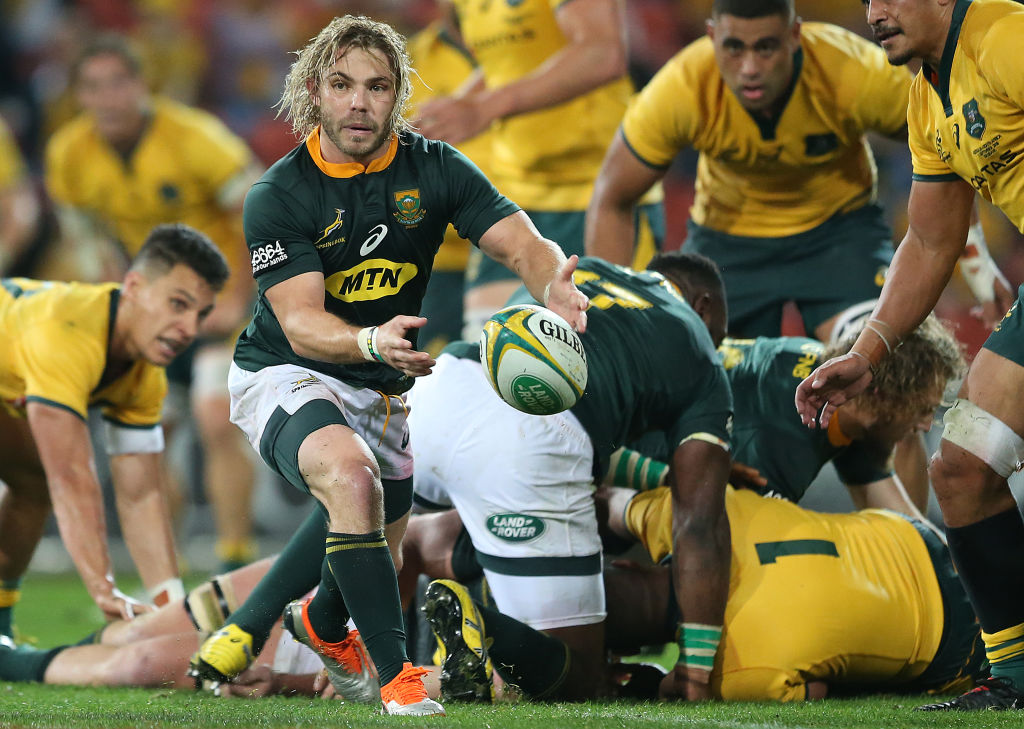By Nick Cain
SOME of the leading lights in World Rugby appear to be struggling to work out which way is up. Most notable among them are the world governing body’s Argentine vice-chairman, Agustin Pichot, and its Australian chief executive, Brett Gosper, who this week were reading from different scripts.
Pichot claimed that the future of the international game is under threat, arguing its existing financial model is not fit for purpose and declaring that there are serious problems with the new global season which have to be resolved in Sydney this week.
At the same time Gosper was busy mapping out why there are imminent plans by World Rugby to expand the World Cup to 24 teams – possibly as soon as 2023 – from the 20-team format now in place.
Notwithstanding South Africa‘s thrilling 36-34 victory over New Zealand in Wellington last weekend, Pichot has good reason to be concerned that the Southern Hemisphere sector of the game appears to be malfunctioning in various departments.
Crowds have been falling alarmingly in the Rugby Championship and Super Rugby, and the format in the franchise tournament being tweaked continuously has left no-one satisfied with problems festering rather than being resolved.
Although the Springboks put a spanner in the All Black works by claiming their first victory against the world champions in four years, the domination of the Rugby Championship by New Zealand, with South Africa, Australia and Argentina unable to break their stranglehold, remains a serious concern.
It is worth looking at how South Africa against New Zealand, one of the great global sporting rivalries, had become devalued by the lopsided nature of results between the two nations over the last 15 years.
When South Africa beat New Zealand in the 1995 World Cup final the results ledger stood marginally in favour of the Springboks, with 21 wins to the All Blacks 18. By 2000 New Zealand were marginally ahead at 28 wins to South Africa’s 26, and the interest in this series was intense – but since then it has been virtually all one-way traffic with New Zealand racing away by a 57 wins to 36 margin.
Their latest victory over New Zealand may have restored some of South Africa’s box office presence, but there were no signs of it the previous weekend when just under 28,000 fans turned out to watch their Rugby Championship Test against Australia at the Suncorp in Brisbane, a stadium with a 52,500 capacity.
Fortunately, with All Black captain Kieran Read’s downplaying the ‘greatest rivalry’ billing pre-match, the New Zealanders might have been guilty of allowing a sliver of complacency to slip into their mindset, and with the South Africans defending with manic intensity they held on for a famous away victory.
What the match demonstrated beyond any doubt is that Rugby Union has to have truly competitive matches as its bedrock if it is to grow as a professional sport.
Uncertainty of outcome is key, because when competitions start leaning towards foregone conclusions – as has happened too often with the Rugby Championship and Super Rugby – they are sliding towards the abyss.
It might be an idea for Pichot to focus on finding a remedy in this area rather than his tendency to allocate blame for rugby’s ills to the club game in England and France, both of which have developed competitive structures which are energised by promotion–relegation.
This is why Gosper has to have competition at the top of his agenda when he talks about expanding the World Cup. There are still far too many foregone conclusions and mis-matches in the existing structure of 20 teams, and this needs to be addressed first.
It also raises questions about a mission statement made by the World Rugby chief executive last week. Gosper said: “The tendency for us is to look to expand. It’s growing the global game, getting interest from fans and commercial interest in new markets to grow the sport. We are definitely in an expansive mindset.”
He added: “You have to make sure, of course that you have got the teams competitive enough to move to a 24 team tournament.”
Even a cursory glance at the record of second tier nations in the World Cup tells us that, with not a single second tier semi-finalist in eight tournaments covering a 30 year period, Gosper’s statement on expansion has a large element of wishful thinking about it.
There is no question that second tier nations have become more competitive, but those underneath that are still a long way adrift of the standards required to prevent them being overwhelmed by the top professional nations.
Far better that World Rugby concentrate their resources on developing a genuinely competitive second tier World Cup rather than undermining their flagship event.
























